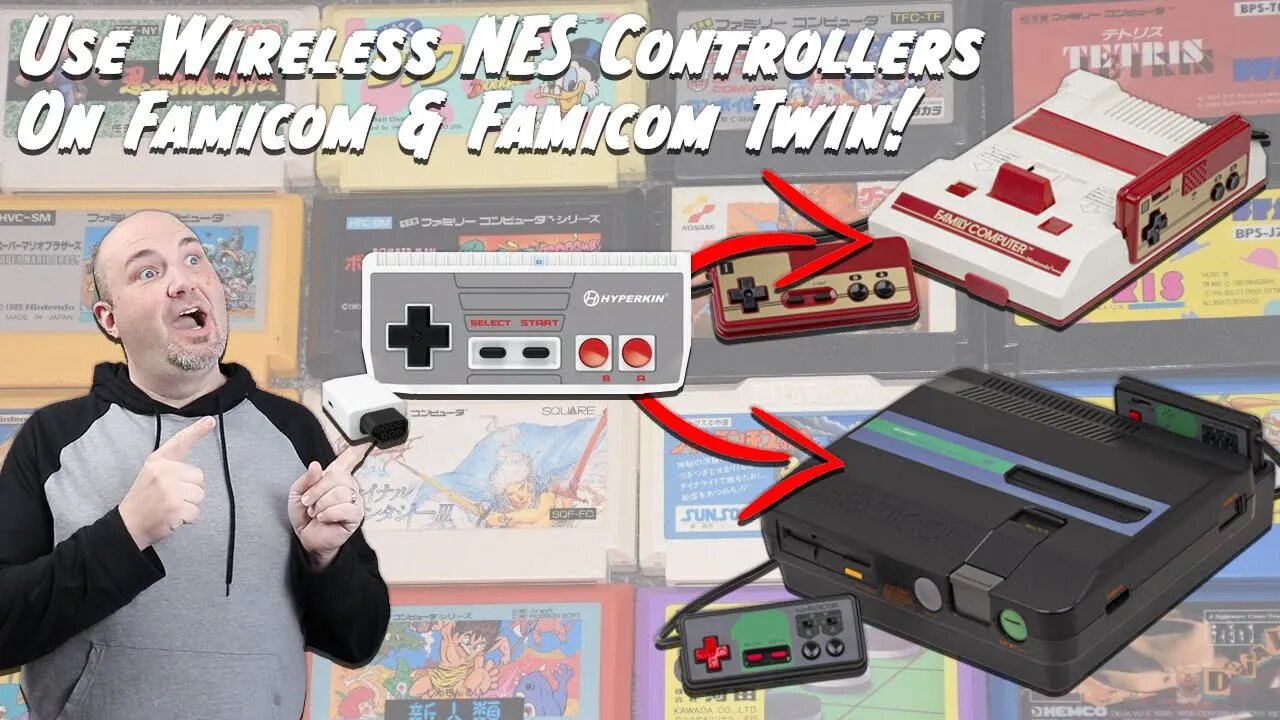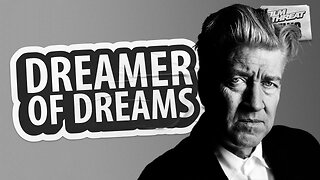Premium Only Content

How-To Wire an Adapter For the Nintendo Famicom to use NES Controllers
In this episode, I show you how to build an adapter so you can use NES Controllers on a Nintendo Famicom & Sharp Famicom Twin Turbo.
Chapters:
0:00 - Introduction to the Famicom & Sharp Famicom Twin
3:14 - Understanding the Famicom Expansion Port
3:36 - 15 Pin Compact Connector Port overview
4:17 - Prepping the NES Port for soldering
6:16 - Clarifying the Wiring Diagram for 1 controller
7:20 - Initial Test Fit on the Famicom
7:49 - Testing on Sharp Famicom Twin Turbo
10:02 - Wrap Up & Final Thoughts
What we knew here in the USA as the Nintendo Entertainment System was a bit different in Japan. The Famicom, or Family Computer, was hugely successful in Japan at a time when the US was still reeling from the Video Game Crash of 1983. Nintendo made several add-on peripherals for the system, including a floppy drive system known as the Famicom Disc System. Both the Famicom and the Disc System would become so popular that they even collaborated with Sharp Electronics to make a 2-in-1 system called the Sharp Famicom Twin. These are all amazing systems and I now own several Famicoms and a Sharp Twin Turbo, thanks to the guys at @Famicom Dojo (Check them out at https://www.youtube.com/user/FamicomDojo)
I will tell you, I absolutely love my Famicom and of my Sharp Famicom Twin Turbo. They really do provide a different gaming experience than the NES, mostly due to the enhanced audio chips that the NES lacked. One of the downsides of both my Famicom and Sharp Famicom Twin, however, is the fact that the controller cables are extremely short. And on top of that, the fact that the Famicom itself only outputs via RF, but thankfully the Twin Turbo outputs Composite Video.
The Famicom, and the Sharp Twin Turbo, both have a 15 pin socket on them. This was designed to use with accessories such as the Light Zapper. Doing some research, I found an old controller adapter schematic that I could wire up to be able to potentially use NES controllers on my Famicom by tapping into this 15-pin port. I thought the schematic was a bit confusing myself, which took me longer to get the build complete. What threw me off was the fact the original diagram was created with the idea of 2 controllers connecting to this port. Frankly, I just needed one, and created my own schematic which helped me keep things straight.
With the adapter completed, I plugged it into my Sharp Twin Turbo Famicom, one of my favorite systems in my collection, and fired it up with my Hyperkin Wireless Cadet Controller. With Bio Miracle Bokutte Upa installed in the disk drive, I powered on my system. No sparks, that was a good sign! The LED on the dongle started to blink when the power was applied, another good sign! I powered up the Scout itself, and it connected to the dongle! Even more good signs! I started to mess with the D-Pad and buttons and everything worked as it should! I yelled a bit when this test was a success, alerting my dogs and my wife that I was up to something. It worked, it really did, and the lag and latency is virtually non-existent! With this setup, I do lose the turbo functionality, but Best of all, this also means that I can use things like the NES Max or NES Advantage as well.
With everything that I purchased for this Famicom Controller Adapter Mod, this adapter cost me about $15 to $20 in parts. I don't have any intention of mass producing these in the future, but I may do one-offs here and there to help people out. For those wondering, the name of the game being played is Bio Miracle Bokutte Upa, and it is designed by Konami for the Famicom Disc System. This is a platformer that I learned about from @JohnRiggs , and actually bought when I was at the Portland Retro Gaming Expo in 2018.
#Famicom #SharpFamicomTwin #Nintendo #FamicomControllerAdapter
The footage used in this review are used under the Fair Use laws, referenced below:
https://www.law.cornell.edu/uscode/text/17/107
Notwithstanding the provisions of sections 106 and 106A, the fair use of a copyrighted work, including such use by reproduction in copies or phonorecords or by any other means specified by that section, for purposes such as criticism, comment, news reporting, teaching (including multiple copies for classroom use), scholarship, or research, is not an infringement of copyright. I
The fact that a work is unpublished shall not itself bar a finding of fair use if such finding is made upon consideration of all the above factors.
(Pub. L. 94–553, title I, § 101, Oct. 19, 1976, 90 Stat. 2546; Pub. L. 101–650, title VI, § 607, Dec. 1, 1990, 104 Stat. 5132; Pub. L. 102–492, Oct. 24, 1992, 106 Stat. 3145.)
-
 12:21
12:21
RoXolidProductions
6 months ago $0.03 earnedALL-NEW Nintendo Switch, DS & 3DS Game & System Cleaning Kits!
1844 -
 2:27:15
2:27:15
vivafrei
17 hours agoEp. 246: Eve of Trump's Inauguration! Confirmation Hearings Analysis! TikTok Goes Dark & MORE!
209K133 -
 LIVE
LIVE
Vigilant News Network
12 hours agoBill Gates’ New Bioterror Project Exposed | Media Blackout
1,505 watching -
 7:56:34
7:56:34
Barry Cunningham
1 day agoWATCH LIVE: TRUMP INAUGURATION MAKE AMERICA GREAT AGAIN VICTORY RALLY - 1 DAY TO GO!!
86.9K55 -
 8:36
8:36
China Uncensored
15 hours agoIs China’s EV Industry Collapsing?
215K125 -
 4:17:00
4:17:00
Tundra Tactical
1 day ago $29.91 earnedSHOT SHOW 2025!!!!!! Whats Are We Looking Forward To Most
274K30 -
 22:53
22:53
Film Threat
1 day agoA TRIBUTE TO VISIONARY DIRECTOR DAVID LYNCH | Film Threat News
122K9 -
 20:30
20:30
Exploring With Nug
1 day ago $7.95 earnedMissing Father of 2 FOUND Underwater In Shallow Pond!
95.2K15 -
 19:19
19:19
This Bahamian Gyal
1 day agoThe View PRAISES Michelle Obama for DITCHING TRUMP inauguration, "when they go LOW, go even LOWER"
77.8K77 -
 14:25
14:25
Degenerate Jay
1 day ago $9.15 earnedThe Flash Movie Failed Because People Hate The Character? Sure.
162K26